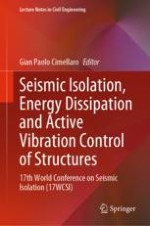2023 | OriginalPaper | Buchkapitel
Origin of Seismicity in Italy as a Clue for Seismic Hazard
verfasst von : Carlo Doglioni
Erschienen in: Seismic Isolation, Energy Dissipation and Active Vibration Control of Structures
Aktivieren Sie unsere intelligente Suche, um passende Fachinhalte oder Patente zu finden.
Wählen Sie Textabschnitte aus um mit Künstlicher Intelligenz passenden Patente zu finden. powered by
Markieren Sie Textabschnitte, um KI-gestützt weitere passende Inhalte zu finden. powered by
